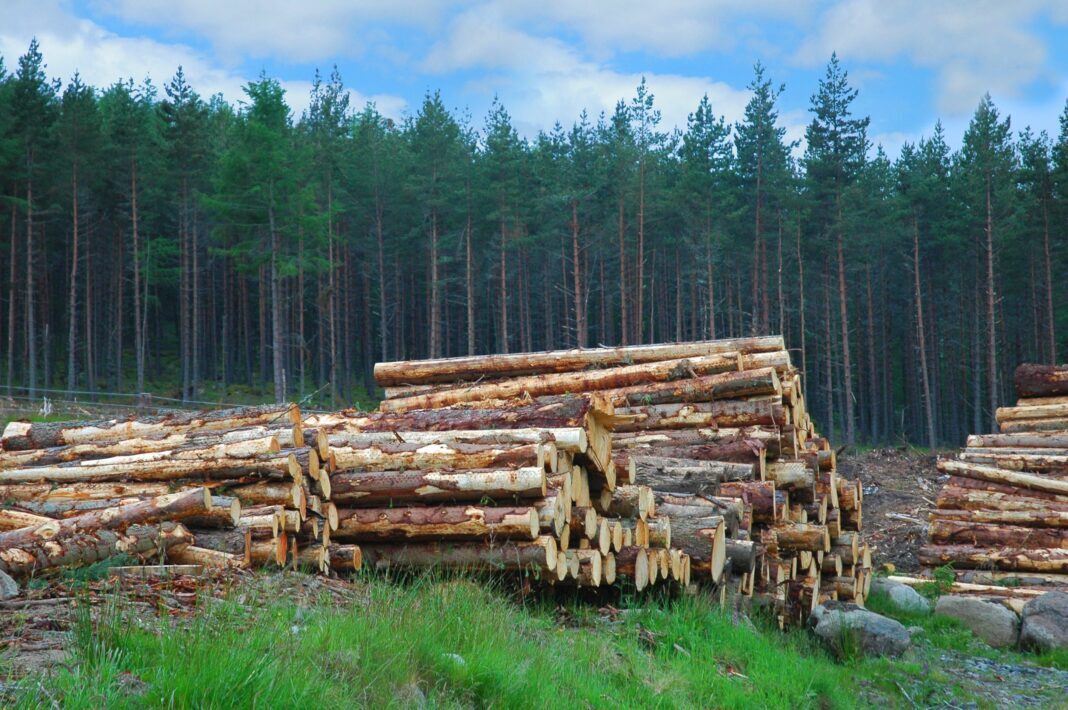
By Sam Hart, innovation manager, Construction Scotland Innovation Centre (CSIC)
IN the tale of the Three Little Pigs, only the house made of bricks survived the huff and puff of the Big Bad Wolf. But we know that’s not how it would work in reality: in blustery Scotland, as much as 85% of new homes are built with timber at their core – almost three times as many as England and Wales, where brick and block tends to remain the favoured method.
Perhaps it is because we have the natural resources at our fingertips that Scotland has developed skills and expertise in timber construction. The amount of land covered by woodlands and forests has grown from around 5% at the beginning of the 20th century to 19% today and the sector contributes an estimated £1 billion to the Scottish economy. However, more widespread use of timber could help bring the whole of the UK closer towards net zero.
The greater use of a naturally renewable, low carbon-embodied material can only help boost sustainability in the built environment, and we are now also looking at the additional materials that can be combined with timber frame. Scotland is ahead of the curve in that respect and working to reduce the environmental impact of timber frame in its entirety, whether that is the type of insulation or plasterboard it is used alongside.
For instance, Construction Scotland Innovation Centre (CSIC) has commenced a project to develop a Sustainable Insulation Hub, working collaboratively with the supply chain to explore the possibilities for natural, bio-based, or circular insulation alternatives.
At the moment, a staggeringly small proportion – around 1% – of insulation used in UK buildings comes from natural materials. All of that is imported from overseas, adding to its carbon footprint. At our innovation factory, we have the UK’s only large-scale thermo-bonding line which can be used to trial new materials at an early stage that could be combined with timber frame.
Looking at each of the components of timber frame, and how they could be made more sustainable, could make a significant contribution to reducing the carbon footprint of the built environment, particularly in housebuilding. In England and Wales, the appetite for timber frame is growing – for example, with Barratt Developments having recently acquired one of the largest timber frame manufacturers, Oregon, and in doing so making a commitment to increased offsite construction south of the border.
The next generation of timber panels could be an incredibly valuable way to build sustainably, and the research and development work undertaken in Scotland could be easily applied by companies across the UK. There is a real opportunity to take what has been learned in Scotland and roll that out more widely into new-build homes.
Using prefabricated timber panels could also mean a transition in construction techniques, working habits and environments, with greater focus on offsite manufacturing. There are a range of benefits to that, in addition to the reduced environmental impact.
For instance, with less of a requirement for activity on site, companies can implement a range of digital processes and techniques that help to improve the quality and accuracy of products as well as reducing waste. As older buildings are decommissioned, materials can also be reused and recycled with the embodied carbon of the old building being spread out among new more sustainable projects.
There are additional positives in terms of diversity and inclusion, with some studies showing that factories tend to have greater diversity among the workforce, compared to the typical on-site construction environment. As things stand, we have an industry that is not representative of society, which needs to change. Digitalisation and modernisation can only help to create a more attractive career path for the next generation of talent.
Change may be on the horizon, but despite the clear opportunities we have to remember that timber is a renewable material and takes 30 or 40 years to mature. The supply chain must, therefore, move at a pace that reflects that with effective collaboration between the forestry and construction industries to retain the right balance between supply and demand.
The Scottish Government, Scottish Construction Leadership Forum, Scottish Forestry, and Confor are just some of the organisations driving the greater use of timber and development of the industry in Scotland, in the hope that we can not only make the most of the opportunities in England and Wales, but support the wider UK efforts towards achieving net zero. Knowledge sharing will be key to this, and there is a wealth of expertise in timber construction built up in Scotland that can now be applied further afield.











